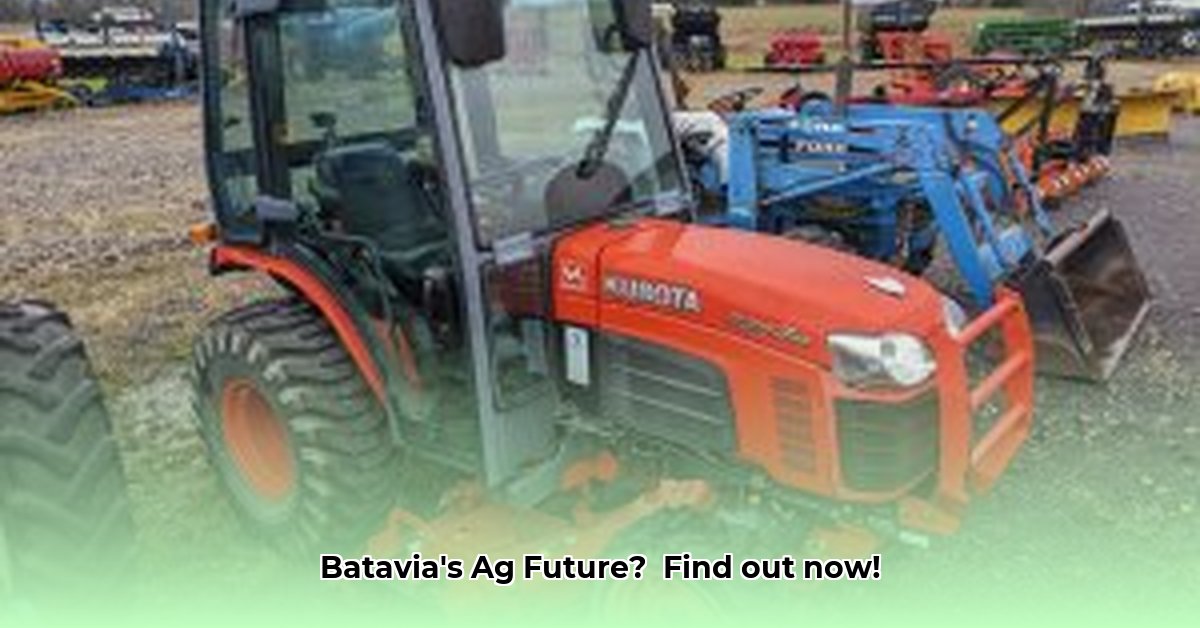
Empire Tractor Batavia: A New Chapter in Agricultural Equipment
Champlain Valley Equipment (CVE) recently acquired Empire Tractor Batavia, a significant development impacting the local agricultural landscape. This isn't merely a financial transaction; it's a strategic move with far-reaching consequences for the regional agricultural economy. The acquisition combines two major dealers for New Holland, Great Plains, and Woods Equipment, presenting opportunities for significant operational synergies and cost savings. For more information on Empire Tractor Batavia, visit their website.
Understanding the Deal: Why CVE Acquired Empire Tractor
CVE, a prominent player in the agricultural equipment sector, recognized a strategic opportunity in Empire Tractor Batavia. The acquisition wasn't solely about increasing dealership numbers; it was about strengthening market position and achieving operational efficiencies. By combining the resources and expertise of both companies, CVE aims to streamline purchasing, service, and overall operations, leading to reduced costs and enhanced profitability. This is particularly relevant in the current economic climate marked by increased operational expenses for agricultural businesses.
The Numbers Game: Addressing Rising Costs in Agriculture
Farming has become increasingly expensive. Production costs have substantially increased since the pandemic, driven by factors including supply chain disruptions, tariffs, higher insurance, increased wages, and significantly higher shipping costs. Empire Tractor Batavia faced challenges navigating these elevated expenses. The CVE acquisition offers a solution, leveraging the resources and scale of a larger organization to mitigate these rising costs and improve operational efficiencies.
Riding the Rollercoaster: Navigating Market Volatility
Agricultural markets are inherently volatile. While the local dairy industry is currently performing well, grain markets show considerable fluctuation. This inherent instability demands adaptability and resilience. CVE's strategy to manage this volatility centers on innovation and market responsiveness, enabling the combined entity to adapt to changing market dynamics and maintain profitability amidst fluctuating conditions.
Facing the Competition: A Competitive Landscape
CVE now faces intense competition from large agricultural equipment companies like Land Pro, Sydenstricker Nobbe Partners, United Turf & Ag, and others. These established players possess substantial resources, creating significant challenges in pricing and market share. CVE's success hinges on effectively integrating Empire Tractor Batavia and optimizing operations to enhance customer satisfaction and build a competitive edge.
The Future: CVE's Action Plan
CVE's integration strategy for Empire Tractor Batavia focuses on a two-phased approach:
Short-Term Strategy (0-1 year): Immediate priorities include seamless business integration, streamlining purchasing and service operations, and upgrading customer management systems. The goal is a smooth transition for employees and customers.
Long-Term Vision (3-5 years): Long-term success relies on cost reduction through data-driven inventory management, technology adoption, and strategic product selection. This approach will optimize resource allocation and enhance profitability.
Who Wins? The Ripple Effect of the Acquisition
The acquisition impacts various stakeholders:
| Stakeholder | Short-Term Effects | Long-Term Effects |
|---|---|---|
| CVE | Expanded market share, potential cost savings | Increased profitability, stronger regional presence |
| Empire Tractor Batavia Employees | Adaptation to new systems, potential training opportunities | Career advancement opportunities, improved benefits |
| Customers | Enhanced service, broader product selection | Improved access to resources and support, potential loyalty programs |
| Suppliers | Streamlined supply chain interactions | Expanded partnership opportunities, potential for better pricing |
The Challenges Ahead: Mitigating the Risks
CVE faces several challenges:
| Risk Factor | Mitigation Strategies |
|---|---|
| Integration Problems | Phased integration, dedicated project team, open communication |
| Economic Downturns | Client diversification, robust cost structure, exploring new revenue streams |
| Competition | Prioritizing customer service, effective loyalty programs, optimized pricing |
| Supply Chain Disruptions | Supplier diversification, inventory management, secured long-term contracts |
The acquisition of Empire Tractor Batavia represents a pivotal moment for the region's agricultural sector. Success depends largely on effective integration, market adaptation, and customer focus. The future of agriculture in the region will bear the imprint of this significant change.
Mitigating Supply Chain Risks in Agricultural Equipment Retail Mergers
Champlain Valley Equipment's acquisition of Empire Tractor highlights the importance of skillful supply chain management in mergers. Integrating two established businesses demands meticulous attention to potential supply chain disruptions. Let's explore strategies for mitigating these risks in the context of this specific case.
Strategic Steps for Risk Reduction
Successfully integrating supply chains requires a multi-pronged approach:
Comprehensive Due Diligence: Thorough pre-acquisition assessment of Empire Tractor's supply chain, including supplier analysis, contract review, and identification of potential single points of failure.
Supplier Relationship Management: Building strong relationships with key suppliers, fostering open communication, and potentially renegotiating contracts to ensure a smooth transition and secure alternative suppliers where needed.
Inventory Optimization: Analyzing and optimizing inventory levels across both companies, potentially improving warehouse space utilization and implementing advanced inventory tracking systems for efficiency and cost reduction.
Logistics Streamlining: Careful planning for integrated logistics, including route optimization, shipment consolidation, and potential investments in technology for tracking and efficiency enhancements.
Technology Integration: Implementing integrated technology platforms, such as ERP systems, to enhance visibility, streamline processes, and enable real-time data-driven decision-making.
Contingency Planning: Developing comprehensive contingency plans to address potential disruptions, such as natural disasters or supplier failures, including backup suppliers and alternative transportation routes.
Continuous Monitoring and Improvement: Ongoing monitoring and evaluation of the integrated supply chain, with regular performance reviews and proactive adjustments to ensure long-term stability and efficiency.
The proactive approach outlined above is essential for preventing supply chain disruptions and ensuring the long-term success of the merger. Ignoring these steps may lead to financial instability and reputational damage.